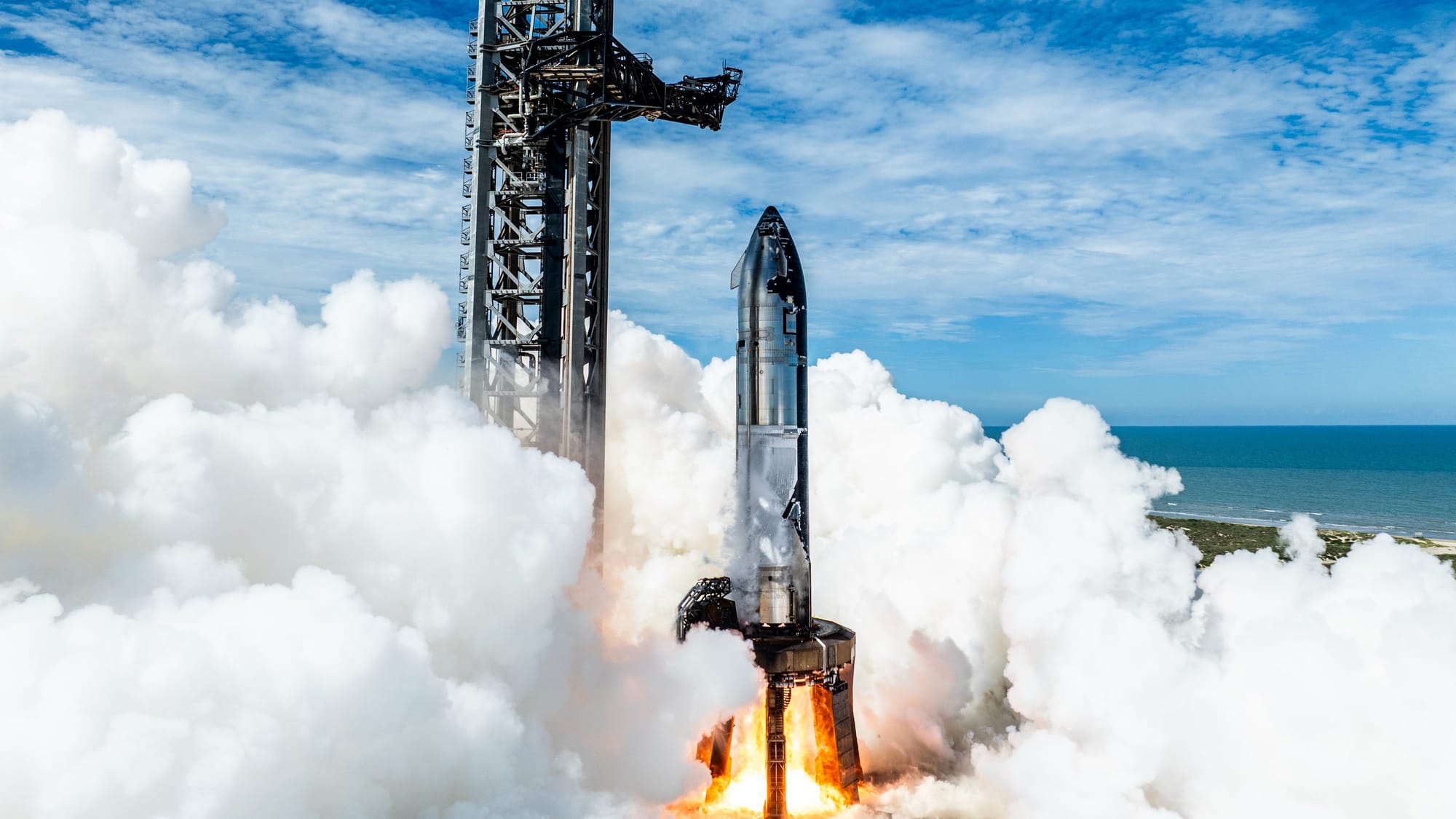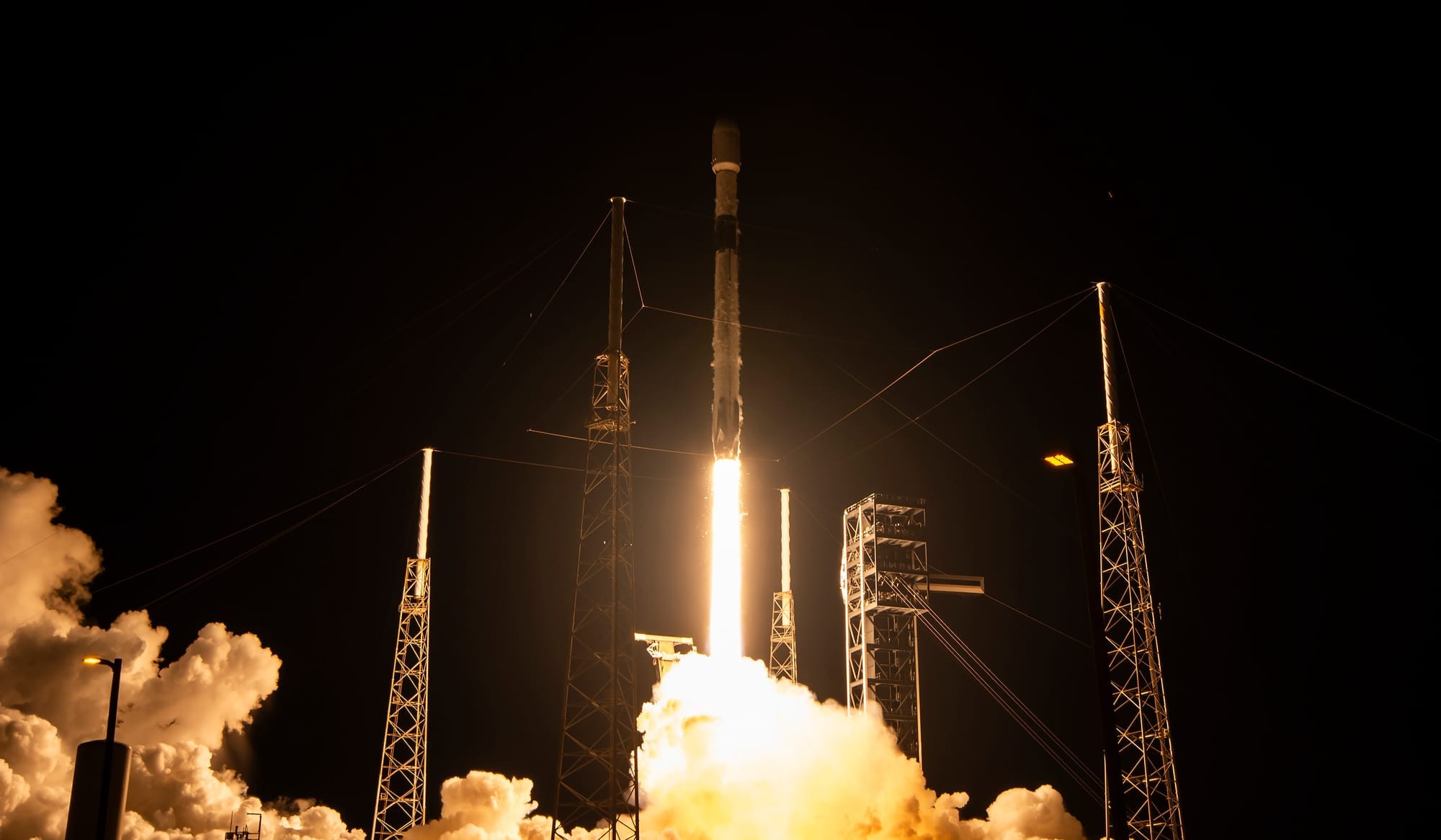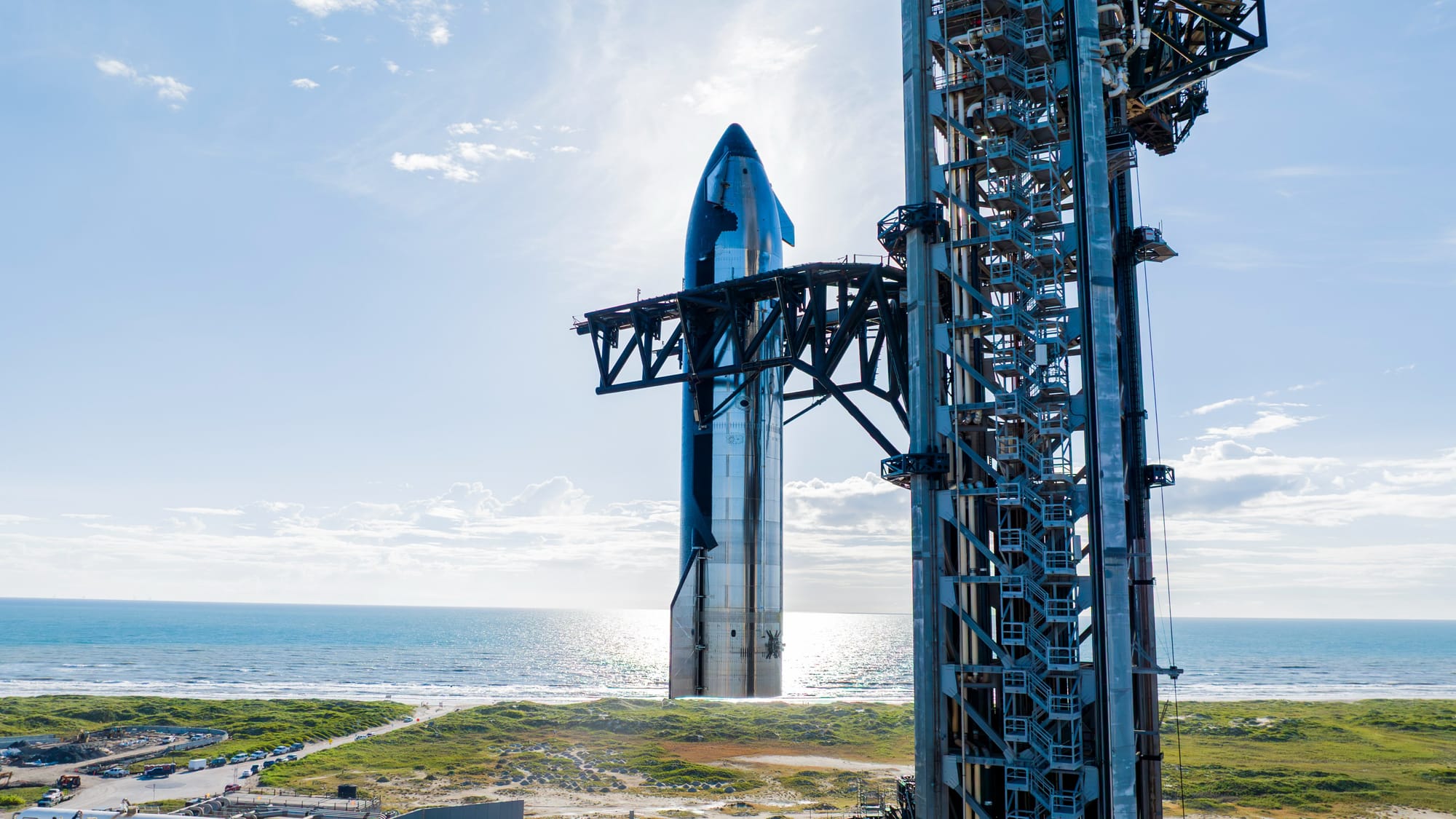Table of Contents
SpaceX is hoping to perform the tenth flight test of its in-development fully reusable Starship-Super Heavy launch vehicle as soon as next week.
On August 24th, SpaceX is aiming to launch another flight test of Starship, following three back-to-back failures of a new 'Block 2' version of the Starship upper-stage. A successful flight should resume progress in developing the reusable rocket.
Flying the upcoming flight test will be Super Heavy Booster 16 and Ship 37, both making their first flights.
SpaceX detailed a few areas it hopes to make progress in the upcoming flight test through an update on its website. For the booster's mission plan, the company detailed:
"[Primary] test objectives for the booster will be focused on its landing burn and will use unique engine configurations. One of the three center engines used for the final phase of landing will be intentionally disabled to gather data on the ability for a backup engine from the middle ring to complete a landing burn. The booster will then transition to only two center engines for the end of the landing burn, entering a full hover while still above the ocean surface, followed by shutdown and drop into the Gulf of Mexico."
For Ship 37, it is hoped that the vehicle will make it to engine cutoff while maintaining control over its attitude. In space, the vehicle is planned to deploy eight Starlink simulators and perform a burn with a Raptor engine.
Reentry tests are once again being performed, with a descent profile designed to stress the structural limits of Starship. Various heat shield tiles have been removed as well, with some replaced with alternative solutions, including active cooling.
At the end of the tenth flight test, Ship 37 may splash down in the Indian Ocean, a feat not seen since the vehicle's sixth flight test.
As with the previous nine flight tests, this mission will fly from Starbase, Texas, using SpaceX's only operational launch pad at its Starship test site.
If the tenth flight test is successful, flight eleven could head into orbit, potentially for the first tower catch of a Starship.
2025 was previously planned to be a key year for the Starship program, as a Ship-to-Ship propellant transfer is expected this year by NASA. Propellant transfer between two vehicles is critical for getting the Starship lunar lander out to the Moon, and returning American astronauts to the surface through the Artemis program.
Starship keeps blowing up
This year, the Starship program has regressed significantly in terms of progress. In June, Ship 36 unexpectedly exploded during a routine test, wiping out a critical pre-flight test stand with it. Meanwhile, during flight tests of the vehicle, Ship 33 was lost due to a fire in its engine section in January. Next in March, Ship 34 was again lost in a fire. Then in May, Ship 35 was destroyed during atmospheric reentry following leakages across the vehicle.
SpaceX believes they have solved many of these issues, sharing many details via an August 15th update. Regarding the previous flight test, in May, the company believes Ship 35 and Super Heavy Booster 14 were lost due to:
"Super Heavy flew at a significantly higher angle of attack than previous flights during its descent back to Earth, reaching a peak angle of approximately 17 degrees. This trajectory was a flight experiment to gather data on the limits of the booster’s performance. Once it reached the planned splashdown area, the booster relit 12 of the planned 13 engines for its landing burn. Shortly after the burn started, an energetic event was observed near the aft end of the vehicle followed by loss of telemetry. Final data was received from the booster approximately 382 seconds into flight and at approximately 1 kilometer in altitude over the designated clear zone."
"The most probable cause for the failure at landing burn was higher than predicted forces on the booster structure, specifically on the booster’s fuel transfer tube, due to the increased angle of attack experiment. Post-flight analysis showed that vehicle loads exceeded the capabilities of the transfer tube which is believed to have experienced a structural failure, resulting in a mixing of methane and liquid oxygen and subsequent ignition."
"Following a successful stage separation, the Starship upper stage lit all six of its Raptor engines and flew along its expected trajectory. Approximately three minutes into the burn, sensors in the nosecone detected a steady increase in methane levels. This continued until approximately five minutes into the burn when pressure began to rapidly decrease in the main fuel tank while pressure simultaneously increased in the nosecone. Starship’s systems were able to compensate for the drop in main tank pressure and completed the ascent burn, achieving the planned velocity and Second Stage Engine Cutoff."
"After engine shutdown, the elevated nosecone pressure combined with planned nosecone venting led to a large amount of attitude error, which continued to build up until the vehicle’s automatic fault systems disabled nosecone venting. The attitude error resulted in the ship automatically skipping the payload deploy objective, which was also unable to be completed as the higher nosecone pressure resulted in adverse loads on the mechanism responsible for opening the payload door."
"The most probable root cause for the loss of the Starship upper stage was traced to a failure on the main fuel tank pressurization system diffuser. Cameras inside the vehicle showed a visible failure on the fuel diffuser canister, which is located inside the nosecone volume on the forward dome of the main fuel tank."
Meanwhile, the company shared much less detail regarding the Ship 36 explosion, stating:
"The most probable root cause was identified as undetectable or under screened damage to a composite overwrapped pressure vessel (COPV) in Starship’s payload bay section, which failed and resulted in structural failure of the vehicle causing subsequent propellant mixing and ignition. The COPVs in the payload section store gaseous nitrogen for use in the Starship environmental control system."
In order to prevent a similar explosion in the near future, SpaceX says they will use Starship's composite overwrapped pressure vessels at a reduced pressure level, alongside performing extra inspections and testing.
What is Starship-Super Heavy?
Starship-Super Heavy is SpaceX's in-development fully reusable super heavy-lift launch vehicle and the largest rocket currently flying. SpaceX is currently aiming to have the launch vehicle deliver one-hundred and fifty tons to low Earth orbit while reused or two-hundred and fifty tons when expended, although there are rumors from SpaceX of an expendable payload capacity of three-hundred tons.
On the launch pad, Starship-Super Heavy is one-hundred and twenty-four meters tall and weighs 5,000,000 kilograms fully fuelled. The diameter of both vehicles is nine meters, excluding aerodynamic control surfaces.
What is Starship?
Starship is the second-stage of the Starship-Super Heavy launch vehicle and is planned to be capable of multiple missions into orbit, after a short refurbishment. The vehicle is fifty meters tall and nine meters in diameter, excluding its four aerodynamic control surfaces. Fully fuelled with liquid methane and liquid oyxgen Starship is believed to weigh 1,300,000 kilograms with an approximate weight of 100,000 kilograms unfuelled.
The Starship second-stage is powered by three sea-level Raptor engines along with three vacuum-optimized Raptor engines. These sea-level engines are believed to generate 230 tons of thrust each with the vacuum-optimized engines generating 258 tons of thrust each for a total combined 1,500 tons of thrust for Starship. The vacuum-optimized Raptors are unable to gimbal requiring the sea-level Raptors for control of the second-stage on ascent and landing.
In order to survive re-entry for reuse, Starship has several thousand thermal protection tiles on one side of the vehicle and on all four of its aerodynamic control surfaces. The four control surfaces help guide the vehicle during re-entry and prior to landing inside the atmosphere at a pre-determined location. Starship also has a series of small thrusters to control the vehicle in space before re-entry.
SpaceX is believed to be working on a few variants of Starship for use as a Moon lander, propellant tanker, space station, Mars lander, and as a crewed spacecraft.
What is Super Heavy?
Super Heavy, also called 'the Super Heavy booster', is the first-stage of SpaceX's Starship-Super Heavy launch vehicle. The giant Super Heavy first-stage is planned to be capable of multiple flights per day with minimal refurbishments and inspections. The vehicle is seventy-one meters tall and nine meters in diameter, excluding its four grid fins and chines. Fully fuelled with liquid methane and liquid oyxgen Super Heavy is believed to weigh 3,600,000 kilograms with an approximate mass of 200,000 kilograms unfuelled.
The Super Heavy first-stage is powered by thirty-three sea-level Raptor engines generating a combined thrust of 7,590 tons, with each engine generating 230 tons of thrust. The outer twenty Raptor engines are unable to gimbal with the inner thirteen being able to for control of the first-stage.
To enable the reuse of Super Heavy, the vehicle has four large grid fins placed in the interstage to assist in guiding and controlling during descent. Super Heavy also has four chines running along the lower third of it to generate lift and assist in stabilization.
Shortly after completing the ascent, Super Heavy relights ten engines, as three were running during staging, and performs a 'boost back' burn in order to return to the launch site. After the 'boost back' burn is completed the engines shut down with Super Heavy being guided by a series of small thrusters and its grid fins. Once Super Heavy is at the correct altitude above its landing location three engines start back up for the landing burn. SpaceX currently plans to have Super Heavy land back at the launch site, or at sea if a problem is detected during descent
Super Heavy also features a hot-staging ring atop of it to allow for a faster and simpler staging process, according to SpaceX. The hot-staging ring has dozens of gaps on the sides to allow for the Raptor engine exhaust of Starship to escape.






